Water damage doesn’t end when standing water is removed. Hidden moisture trapped in walls, floors, and structural components causes ongoing damage, mold growth, and costly repairs if not properly dried. Relief Remediation provides comprehensive structural drying services in Marietta, GA, using industrial equipment and proven techniques that ensure complete moisture removal.
Our IICRC-certified technicians serve homes and businesses throughout Marietta including East Cobb, Historic Marietta Square, Windsor Oaks, and Indian Hills. We understand that Georgia’s humidity makes thorough structural drying essential to prevent secondary damage and mold contamination.
Call 770-741-0183 for professional structural drying services in Marietta.

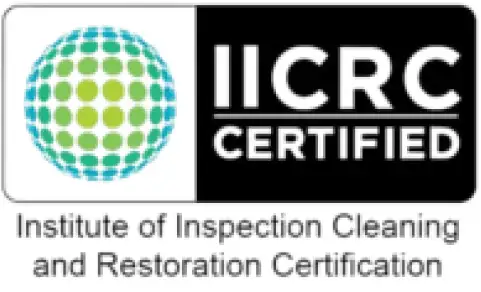
After water damage from floods, burst pipes, or appliance leaks, most homeowners focus on visible water removal. However, moisture absorbed into building materials causes the most serious long-term problems.
Without proper structural drying:
Professional structural drying prevents these problems by removing moisture completely from all building materials before damage becomes permanent.
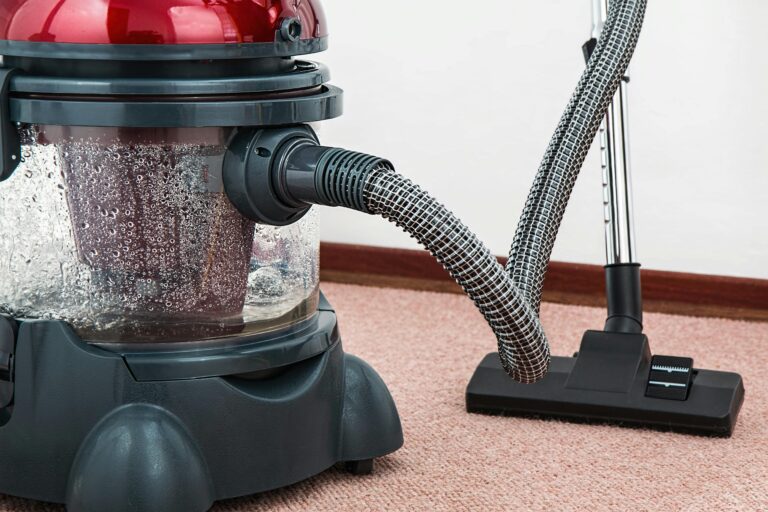
Severe weather brings intense rainfall that causes widespread flooding. Our storm damage restoration team handles storm-related water intrusion, including roof leaks, wind-driven rain, and overwhelmed drainage systems.
If standing water remains, we perform a complete extraction using industrial equipment. Our emergency water extraction services remove surface water before structural drying begins.
We position commercial-grade dehumidifiers and high-velocity air movers strategically throughout affected areas. Equipment placement follows psychrometric principles, creating optimal conditions for rapid moisture removal from structural materials.
Dehumidifier Placement: Industrial dehumidifiers remove moisture from the air, lowering relative humidity to levels that pull moisture from saturated materials. We use refrigerant dehumidifiers for most situations and desiccant dehumidifiers for severe water damage or when heating isn’t available.
Air Mover Configuration: High-velocity air movers create airflow across wet surfaces and through wall cavities. Proper positioning accelerates evaporation and directs moisture-laden air toward dehumidifiers for removal.
We create controlled drying conditions by closing windows, sealing affected areas, and managing temperature. This optimizes drying speed and prevents moisture from spreading to unaffected areas.
Our technicians visit daily to monitor moisture levels using meters and hygrometers. We document progress, adjust equipment as needed, and ensure drying proceeds efficiently. This systematic approach prevents over-drying or under-drying, which causes additional problems.
Different building materials require specific drying approaches:
Wood Flooring & Framing: Hardwood floors need controlled drying to prevent cracking and cupping. We use specialized floor mat systems that create vacuum pressure, extracting moisture directly from wood.
Drywall & Plaster: Wall cavities receive targeted airflow through small inspection holes. We monitor moisture content in studs and drywall separately, ensuring both dry completely.
Concrete & Masonry: Dense materials hold moisture longer. We extend drying time and use penetrating moisture meters to verify complete drying.
Insulation: Wet insulation often requires removal, but in some cases, we can dry it in place using specialized techniques.
Drying continues until moisture readings return to normal levels for your property type and local climate. We document final readings confirming complete structural drying before restoration work begins.
After structural drying is complete, we apply antimicrobial treatments to all affected surfaces, preventing mold growth during and after the restoration process.
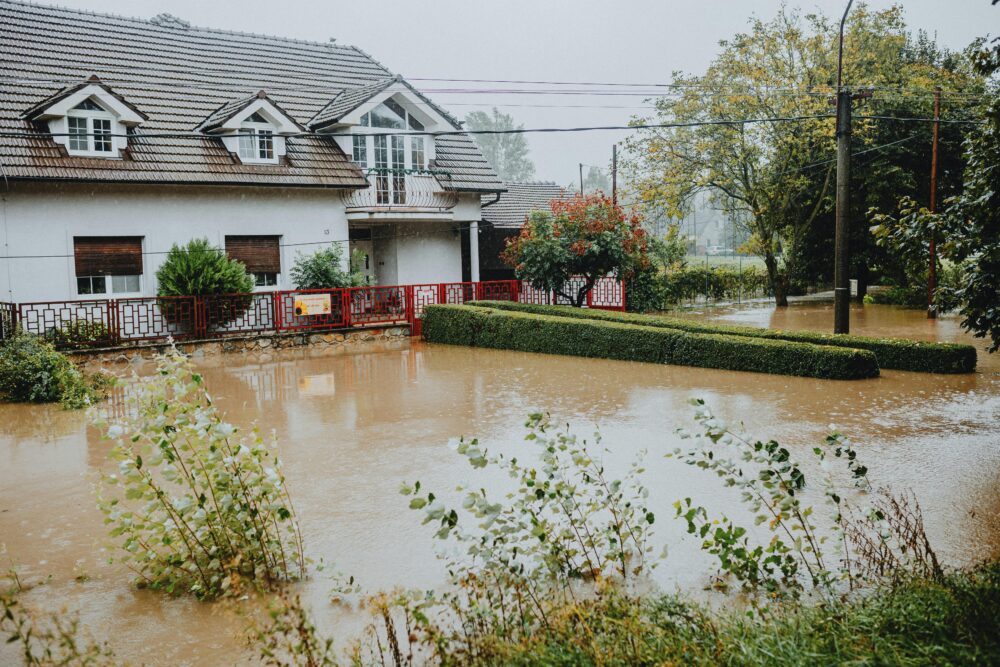
Relief Remediation uses professional-grade equipment designed specifically for structural drying:
Our comprehensive moisture detection and removal services ensure no hidden moisture remains after restoration.
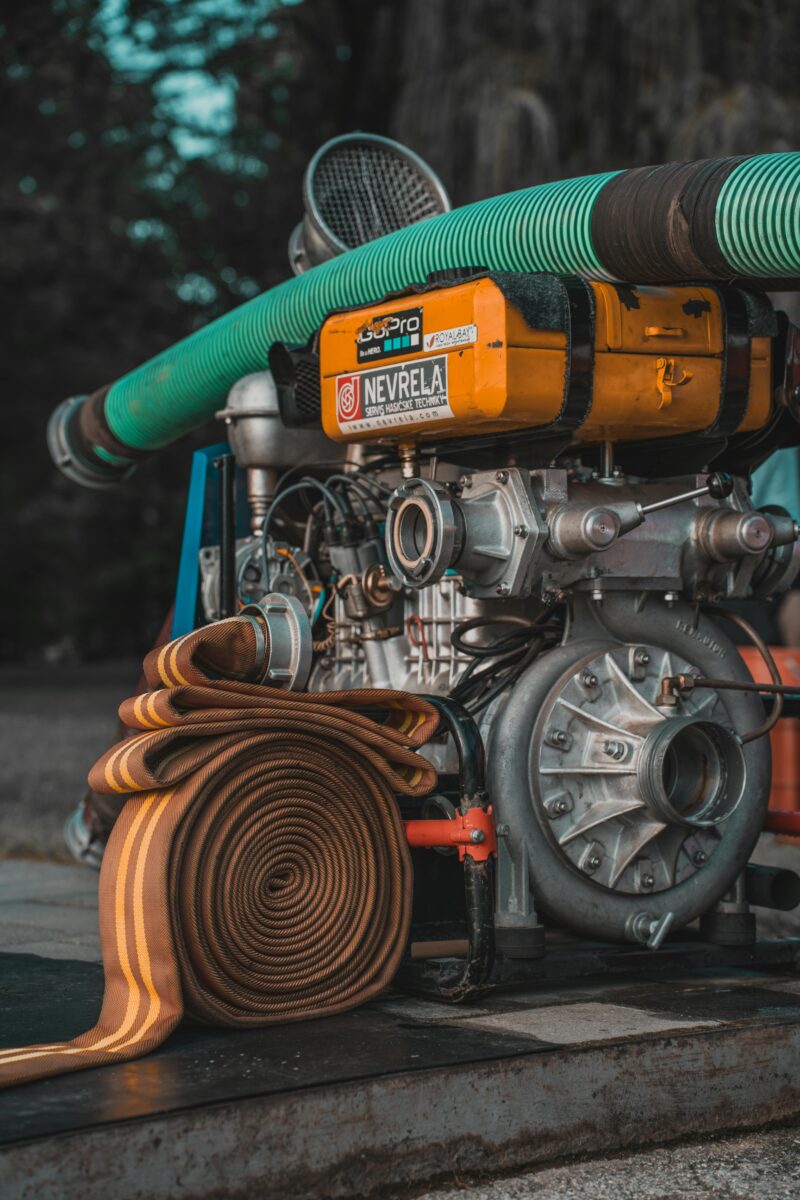
Flood Damage Drying – Floodwater saturates all porous materials thoroughly. Our flood damage restoration includes extended structural drying, addressing contamination, and deep moisture penetration.
Burst Pipe Drying – When pipes burst, water often travels through multiple rooms and floors. Our burst pipe cleanup includes comprehensive structural drying for all affected areas.
Basement Flooding Drying – Concrete walls and floors in basements hold moisture longer than standard construction. Our basement flooding cleanup extends drying time, ensuring complete moisture removal.
Appliance Leak Drying – Water from failed appliances often hides under cabinets and flooring. Our appliance leak cleanup includes targeted structural drying for hidden moisture.
Storm Damage Drying – Storm-driven rain penetrates building envelopes in multiple locations. Our storm damage restoration addresses widespread moisture requiring extensive structural drying.
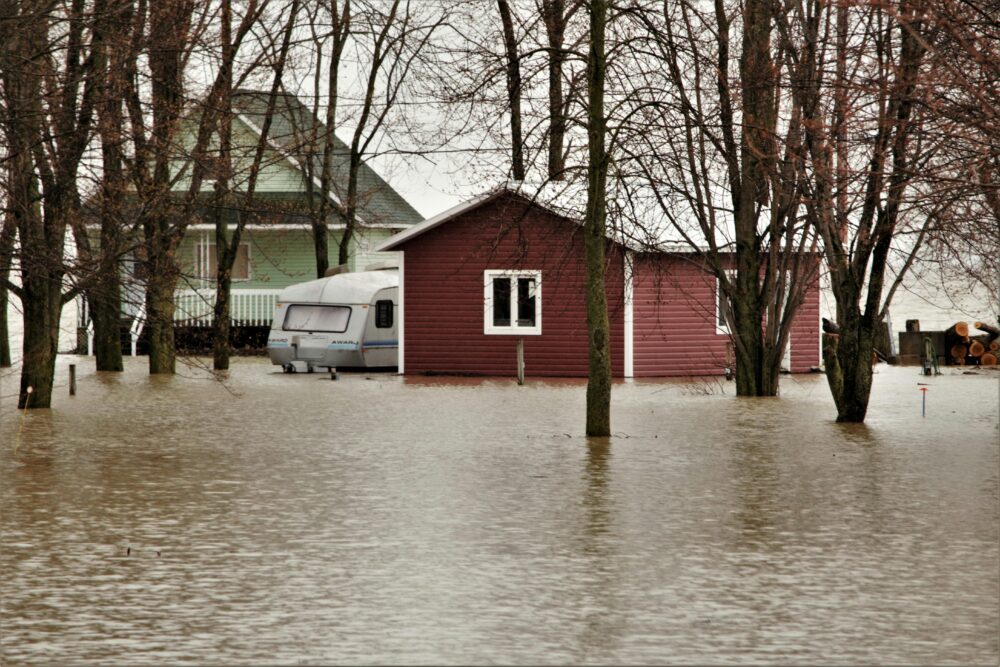
Georgia’s humid subtropical climate creates unique challenges for structural drying in Marietta:
High Ambient Humidity: Marietta’s average relative humidity ranges from 60-80% depending on the season. This high ambient humidity slows natural evaporation and requires powerful dehumidification to create drying conditions.
Temperature Fluctuations: Temperature affects drying speed. We adjust equipment and techniques based on seasonal conditions to maintain optimal drying efficiency.
Mold Growth Risk: Warm temperatures and high humidity create perfect conditions for mold growth within 24-48 hours. This makes rapid, thorough structural drying essential in Marietta properties.
Construction Types: Older homes around the Marietta Square have plaster walls and hardwood floors requiring specialized drying techniques. Newer construction in East Cobb uses modern materials with different drying requirements.
Our local experience ensures we adapt structural drying approaches to Marietta’s climate and construction types.
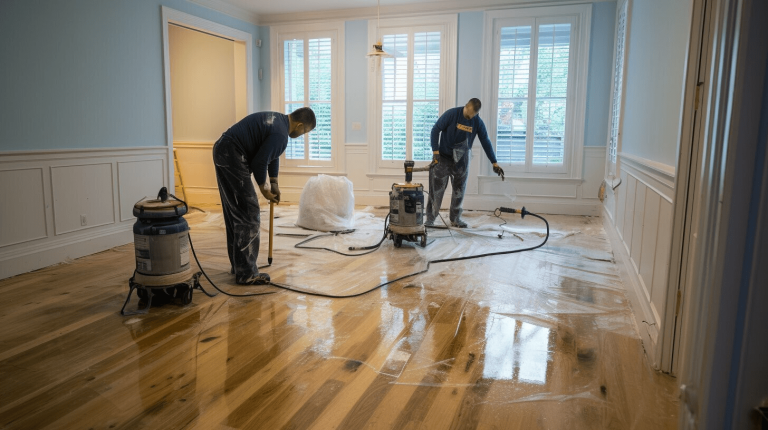
Mold prevention is a primary goal of proper structural drying. Our approach prevents mold growth through:
Rapid Response: We begin structural drying within hours of water damage, preventing conditions that support mold colonization.
Thorough Moisture Removal: Complete drying eliminates the moisture that mold needs to grow. We verify final moisture levels are below thresholds supporting mold growth.
Antimicrobial Treatment: Professional antimicrobial applications prevent mold spores from colonizing during the drying process.
Air Filtration: HEPA air scrubbers remove airborne mold spores during structural drying, preventing contamination spread.
If mold has already begun growing before we start structural drying, our mold remediation specialists safely remove contamination before drying proceeds.
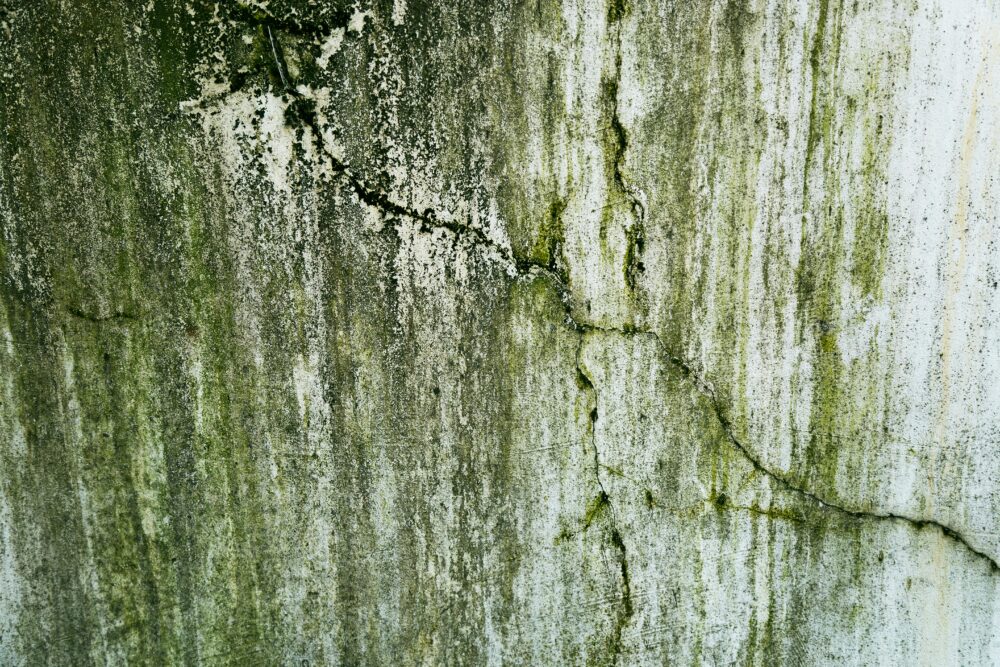
Drying timelines vary based on multiple factors:
Typical Timeline: Most structural drying projects require 3-5 days with proper equipment and monitoring. Complex situations may require 7-10 days.
Factors Affecting Drying Time:
We provide realistic timelines after initial assessment and update you daily on drying progress.
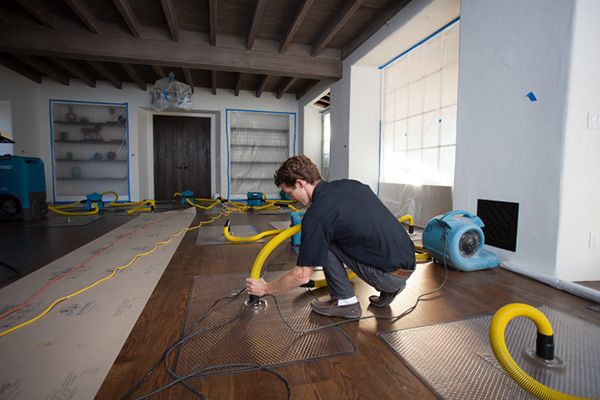
Many homeowners attempt structural drying with fans and rental equipment. This approach typically fails because:
Insufficient Equipment: Residential fans and small rental dehumidifiers lack the power for structural drying. They remove surface moisture but can’t extract water from building materials.
Improper Technique: Strategic equipment placement, controlled environments, and monitoring require expertise and experience that most homeowners lack.
No Moisture Verification: Without moisture meters, you can’t verify when structural drying is complete. Materials that feel dry often contain significant moisture.
Mold Risk: Inadequate drying allows mold to develop in hidden areas, creating health hazards and costly remediation later.
Insurance Issues: Many insurance policies require professional structural drying documentation. DIY attempts may void coverage for subsequent damage.
Professional structural drying costs less than repairs from incomplete drying and mold damage.
Relief Remediation provides professional structural drying services throughout Marietta including East Cobb, Historic Marietta Square, Chestnut Creek, Windsor Oaks, Indian Hills, Northampton, Somerset, Charlton Forge, and Dunleith.
We also serve Roswell, Smyrna, Kennesaw, Acworth, Powder Springs, Alpharetta, Sandy Springs, and Vinings. Our location near I-75 and Cobb Parkway enables rapid response throughout ZIP codes 30006, 30007, 30008, 30060–30068, and 30090.
Our technicians hold specialized certifications in applied structural drying from the Institute of Inspection, Cleaning, and Restoration Certification, ensuring proper techniques and complete moisture removal.
We invest in professional-grade dehumidifiers, air movers, and monitoring equipment that ensure thorough structural drying, not just surface drying.
We visit daily to monitor progress, adjust equipment, and document moisture levels. This documentation supports insurance claims and verifies complete drying.
From initial water damage inspection through structural drying and final restoration, we handle every step of water damage recovery.
Based at 25 Powder Springs St, Suite 215, we understand how Marietta’s climate and construction types affect structural drying requirements.
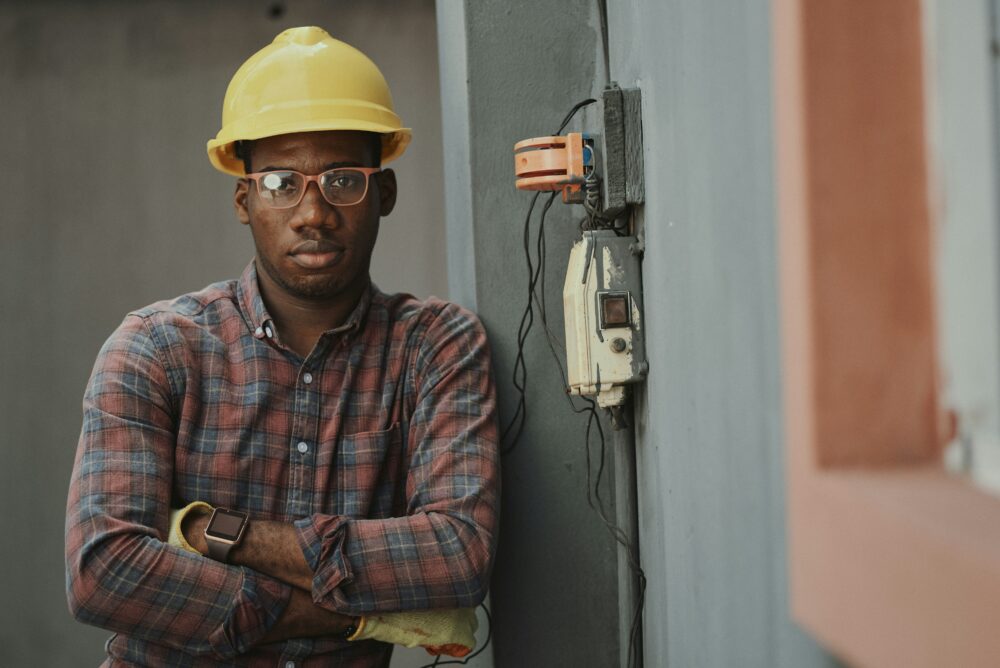
Location: 25 Powder Springs St, Suite 215, Marietta, GA 30064
Phone: 770-741-0183
Certifications: IICRC, PMII, OSHA HAZWOPER
BBB Rating: A+ Accredited
Call 770-741-0183 for professional structural drying services in Marietta, Georgia.
We use moisture meters to measure water content in materials, comparing readings to established dry standards for each material type. Drying is complete when readings return to normal levels for your property and climate.
Usually yes. Structural drying equipment is loud but doesn’t require evacuation unless extensive demolition has occurred or contamination exists. We work around your schedule when possible.
Water absorbs deep into building materials. While surfaces dry quickly, extracting moisture from wood framing, concrete, and other dense materials requires days of controlled dehumidification and airflow.
Incomplete drying leads to mold growth, wood rot, structural deterioration, persistent odors, and costly repairs. Many problems don’t appear until weeks or months after initial water damage.
Fans provide airflow but don’t remove moisture from the air. Dehumidification combined with strategic airflow creates conditions that extract water from building materials, not just surfaces.
When performed promptly and thoroughly, professional structural drying prevents mold growth by eliminating the moisture that mold needs to colonize. However, if mold began growing before drying started, remediation is required.
Often yes. Specialized floor drying systems can save hardwood floors if drying begins quickly and proceeds properly. Severely damaged floors may still require replacement.
Cost depends on damage extent, the affected area size, and drying duration. We provide detailed estimates after assessment. Professional drying costs significantly less than repairs from inadequate drying.
Relief Remediation provides professional structural drying services in Marietta, Georgia, with IICRC-certified technicians, industrial equipment, and proven techniques ensuring complete moisture removal. Contact us at 770-741-0183.
Trustindex verifies that the original source of the review is Google. As a property manager taking over a new property, I needed an apartment that had been sitting for a while completely gutted. The apartment needed special attention. Relief Remediation was super quick to come out, sent me a quote same day and scheduled the work within a week. The team came in and got everything done same day! Thanks again David!Cinthya CabralesTrustindex verifies that the original source of the review is Google. I had a pipe burst in my home and Relief Remediation came out right away. Their team responded quickly, got the water under control, and did an excellent job with the restoration. They also took care of everything directly with my insurance company, which made the process much less stressful for me. I’m very thankful for their professionalism and highly recommend Relief Remediation to anyone needing water damage restoration.D WTrustindex verifies that the original source of the review is Google. I had just bought my first home and had a moisture and mold issue that was driving me insane. David was prompt to come look at the issue the same day I reached out. He thoroughly explained the routes we would take if there was issues and if not. He even offered to price match another vendor. I constantly asked a ton of questions and for advice, and David had patience and understanding. On top of all of this, he was able to address and resolve the issue within a matter of days while keeping communication open. I highly recommend to anyone looking for mold/water damage remediation!Tyler CochranTrustindex verifies that the original source of the review is Google. I called Relief Remediation out for an air quality test and moisture reading due to a leak and mold in my apartment. They were professional, informative, and knowledgeable about the matter. They came with recommendations and and provided a thorough assessment. David walked me through my test results and helped me understand next steps. Would definitely recommend their services.Liz ShivleyTrustindex verifies that the original source of the review is Google. David and team are amazing! Kind, compassionate to my friend! They worked with her schedule. Cleaning, organizing, junk removal went above and beyond what was expected. Well worth the price. I would definitely recommend this company to anyone who wants to help a friend or family with a hoarding issue.jacinda searsTrustindex verifies that the original source of the review is Google. David did a great job sealing up my crawlspace, removing the mold, laying the vapor barrier and installing the dehumidifier. The job was done quickly and for a reasonable price.Keith GereghtyTrustindex verifies that the original source of the review is Google. The technician is honest; he goes extra to make sure customer are satisfied with his professionalism. He is very knowledgeable. I would recommend him to others.Olu AsabiTrustindex verifies that the original source of the review is Google. I called this company for a mold on my deck and musty smell in my basement, David came in and advised me what to do with my deck without trying to charge me for stuff I don’t need also he educated me on what could be happening in my basement and took a sample of the air there to make sure I don’t have mold growing, I noticed that he wasn’t trying to sell me anything and luckily it came out negative which he thought it might be but I wanted to make sure to be safe.Souhaila HadidTrustindex verifies that the original source of the review is Google. David was exceptional! He was thorough, very knowledgeable and professional. I would absolutely recommend Relief Remediation to anyone.Rita LoveTrustindex verifies that the original source of the review is Google. I had a great experience with Relief Remediation. They were prompt, communicative, and clearly committed to doing the right thing. The team took the time to explain the situation, offer honest guidance, and followed through on everything they said they would do. What stood out most was their ethics. No pressure, no upselling—just straightforward advice and quality work. They also went above and beyond to make sure the job was done thoroughly and with care. If you’re looking for a remediation company that does things the right way, I’d recommend them without hesitation.Paul Willard
